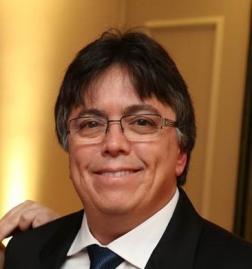
Disclosure: This post is sponsored by Vale and reflects their views, opinions, and insights.
Vale is a Brazilian mining company and one of the world’s largest iron and nickel ore producers. Representatives from Vale will be featured throughout the program at the 9th CCPS Latin American Conference on Process Safety. I spoke with Eduardo Francisco about Vale’s role with CCPS, lessons learned from past incidents, Vale’s sustainability goals, and industry changes.
The 9th CCPS Latin American Conference on Process Safety will take place October 18–20, 2022 in Rio de Janeiro, Brazil. Topics covered include leadership and culture in process safety, emerging topics, cyber risks and process safety technologies, among others. You can view the conference’s program and register on the conference website.
CCPS is initiating a Mining, Minerals, and Metals Subcommittee at the request of our member companies. If you were to join the subcommittee, what kinds of projects or documents would you like to see the group engage in to help Vale and others in these industries?
CCPS’s initiative to open a Mining, Minerals and Metals Subcommittee is very important, and Vale will certainly participate and contribute. One project would be to discuss the CCPS Risk-Based Process Safety (RBPS) system elements and how they are translated to mining, minerals, and metals. There is a general view from the industry that RBPS is applicable only to chemical process industries. This paradigm needs to be addressed and changed. RBPS, when correctly interpreted, can be applied to any industry segment.
Another interesting project would be related to developing PSM lagging and leading indicators for the mining, minerals, and metals industries. Vale has developed and implemented, initially, lagging indicators associated with the API 754 model. Applying this approach has produced valuable initial results. We see the opportunity to look closer at this and approach and to develop new and more efficient method of analysis.
Are there any lessons learned that you can share with our members from recent Vale incidents or mining incidents in general?
Brumadinho is by far the most known incident of Vale’s world wide. The dam break that caused 253 losses of life will be forever remembered at Vale. Like any other incident with huge consequences like this one, it always results in lessons learned. Lessons on emergency response, for example, were among the many lessons. Vale is still learning from Brumadinho every time the incident is brought up inside the company or in more formal situations.
How is Vale accomplishing their goals in sustainability?
Vale has developed sustainability goals with aggressive milestones. In respect to greenhouse gas emissions reduction, for example, Vale has developed and invested in EV locomotives and EV high-capacity trucks, and they are currently being tested and incorporated into the distribution system. The electric power that feeds the batteries from this equipment comes from solar energy farms.
How do you see the industry changing over the next ten years, and what do we need to do to prepare for it?
In our view, with more automation on the horizon, one change that the industry must be ready for is the use of artificial intelligence. Unmanned trucks are already a reality at Vale mines, but we believe that their role will grow to perform even more complex tasks. This change is inevitable and must be carefully addressed.
Learn more about the 9th CCPS Latin American Conference on Process Safety.

Disclosure: This post is sponsored by Vale and reflects their views, opinions, and insights.


